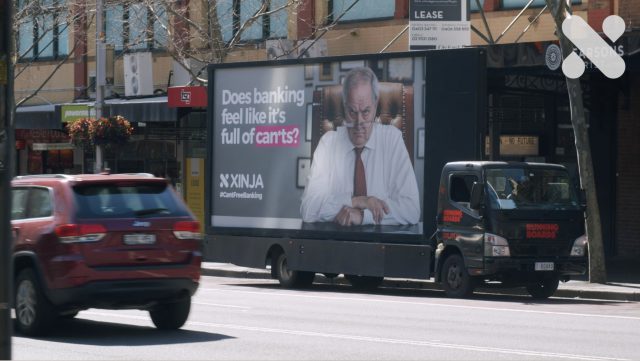Why adjust prices
We live in an era where the only constant is change. And pricing is no exception.
Try this, for example. Start requesting an Uber, to the point where you can see what the price of the trip will be. Wait 1 minute, and then repeat the process. Let me guess, the price changed. This is because Uber is continuously updating it prices for every journey. They have recognised that supply is always changing. And demand is always changing too. They have also recognised that they can significantly grow revenue by getting their pricing right.
While customers don’t like to see prices going up (or “surging”, as Uber calls it), is the lesser evil compared with standing in the rain for hours, or being late for an important business meeting. Higher prices bring more drivers into the market, and they eliminate budget conscious passengers who might be happy to wait, walk, or take the bus.
And in quiet times, price reductions make Uber financially accessible to more passengers which creates employment for more drivers.
So these constant pricing adjustments can actually help both passengers and drivers as well.
After experimenting with Uber, you can try the same test with hotels and airlines. This time you might need to wait 24 hours rather than 24 seconds. However, the same principle applies – the hotel and airline will probably be charging a different price tomorrow, compared with what they are charging today, for the same room or flight on the same date.
Other industries are jumping on the band wagon as well. Many Music Concerts, E-Commerce stores, and sporting events are updating prices daily or more frequently. They have all worked out that there is lots of money to be made by applying Dynamic Pricing.
Increasingly, Build to Rent (BTR) Operators are adjusting their asking rents too. So, we decided to research how often BTR operators are adjusting their prices.
How often should BTR Operators be adjusting prices?
In the above examples, we saw businesses adjusting prices as frequently as every minute. Others are adjusting prices daily. What works for BTR?
With BTR, the sales cycle is longer than for the other products mentioned. A potential tenant will see an ad, book an inspection, carry out the inspection, lodge an application, and then have the application approved. This process might take about a week. It would be unfair, and send a confusing message to the applicant, if the price kept changing during that week.
Furthermore, the factors which determine the optimal price don’t change as often for BTR as they do for Uber. For example, the number of vacant apartments in a building doesn’t change as frequently as the number of vacant Ubers in a suburb.
So, I would usually recommend that BTR operators should update prices (ie asking rents) every 1-2 weeks.
How large should rent changes be?
If calculated correctly, rent changes only need to be incremental. Calculation inputs, such as market rent and vacancies, don’t change a lot from one week to the next. Often the changes only need to be $5 or $10 each week. However, anything smaller than this won’t be sufficient.
The problem arises when rents haven’t been updated for a longer period. You know the rent needs to change, but you don’t know by how much. Often you end up over-shooting. Or, in contrast, you might not go far enough.
Large fluctuations in asking rents are a sure sign you aren’t pricing effectively.
What are BTR operators actually doing?
Our research team gathered data on 5 BTR projects. We looked at the frequency and magnitude of rent changes over a period of 2 months, in September and October 2022. Note that many of the apartments weren’t vacant for the entire 2 months, with the average vacant period being closer to 1 month. A good BTR operator would be adjusting rents, on average, at least twice over that period.
Here is what we found.

In the first community, most vacant apartments didn’t adjust their rents at all. Of those apartments where the rent was adjusted, there was only 1 change over a 2 month period.
Of those changes, most were a $15 per week increase. However, on one occasion the rent increased by a whopping $65 per week. The rent was either way to high after the change, or way too low before the change.

In the second example, the operator almost never changed its asking rent.

This operator has performed reasonably well in terms of frequency of changes.
However, the magnitude of the changes was typically $1 or $2 per week. (Note, while the chart axis label shows $5, this implies changes between $1 and $5. Digging into the data shows that the actual changes were at the bottom end of the range). Realistically, changes of $1 or $2 aren’t going to move the dial. If rents are being updated fortnightly, and the typical change is $2, and the rent is say $50 per week too low, it will take 6 months to get the rent to the right level. By then the property will have been tenanted and the low rate will be locked in for a year.

This operator gets the prize for the least frequent rent adjustments. Zero. Zip. Zilch.
Need I say any more?

And our final operator typically made zero or 1 price adjustment during the 2 months. Those adjustments ranged between a small reduction and a $65 increase.
While better than some of the operators, the frequency of adjustments is still too low, and the size of the adjustments is often very large. Smaller, more frequent adjustments would give a better financial outcome.
Conclusion
While some of the operators performed better than others, none of the operators scored well. Operators should be adjusting asking rents more frequently, and usually in increments of $5-10 per week.
In my discussions with operators, the most common explanation is a lack of time, followed by not having the right skills and tools to calculate rent accurately.
Dynamic Pricing software can help overcome these problems. If you would like to discuss how software could help you optimise your rent, please feel free to contact Price Wizard.





